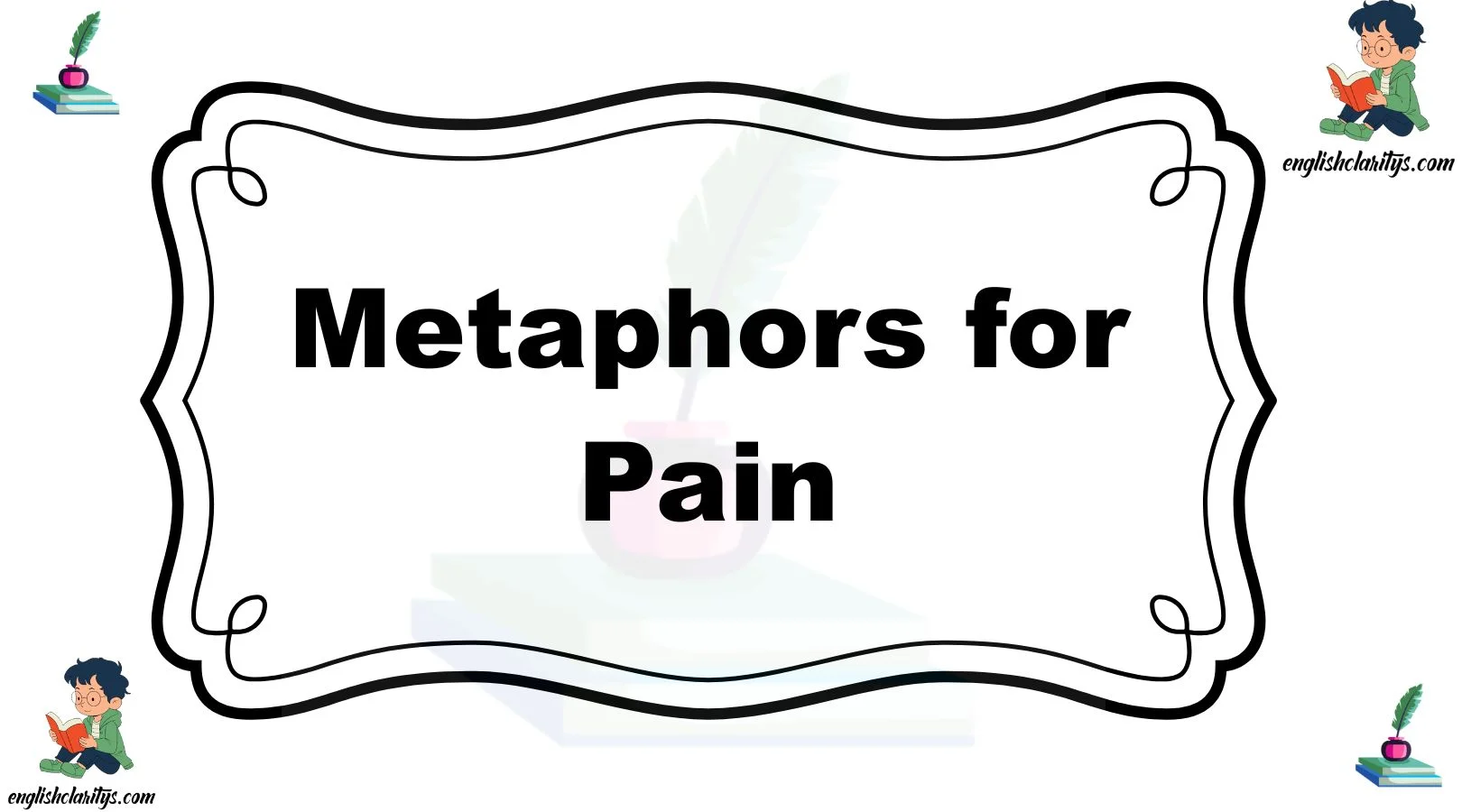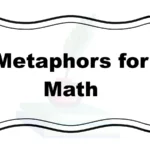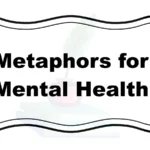Finding the right words to describe pain—whether emotional or physical—can be incredibly powerful. Metaphors allow us to communicate our experiences with depth, warmth, and clarity, especially when words seem to fall short. Whether you’re trying to write, comfort a loved one, or express your own journey, these metaphors for pain can help your message feel more human, relatable, and heartfelt.Using vivid language doesn’t just beautify your words—it invites understanding and healing
1. Pain is a Shadow That Never Leaves
Meaning: Pain lingers constantly like a shadow.
Explanation: Just like a shadow sticks with you, pain can follow silently and persistently.
Example: Ever since she lost her father, grief has become a shadow that never leaves.
Other Ways to Say It:
- Pain trails behind me like dusk.
- It’s a constant ache in the background.
- Sorrow sticks to me like glue.
2. Pain is a Thorn in the Heart
Meaning: A sharp, lingering hurt deep inside.
Explanation: Like a thorn, the pain digs deep and stings with every movement or thought.
Example: His betrayal was a thorn in my heart I couldn’t remove.
Other Ways to Say It:
- An invisible stab that won’t heal.
- A wound that reopens daily.
- A silent scream from within.
3. Pain is a Storm Brewing Inside
Meaning: Emotional turmoil building up within.
Explanation: Emotions clash like thunderclouds, threatening to erupt.
Example: She smiled, but inside, a storm of sadness was brewing.
Other Ways to Say It:
- Chaos bottled up.
- A volcano waiting to erupt.
- A hurricane of sorrow.
4. Pain is a Cage with No Key
Meaning: Feeling trapped in suffering.
Explanation: Pain can imprison the mind and body, making escape feel impossible.
Example: My anxiety feels like a cage with no key.
Other Ways to Say It:
- A prison of emotions.
- Locked inside my own suffering.
- Trapped in invisible chains.
5. Pain is a Fire that Burns Silently
Meaning: Suffering that quietly consumes from within.
Explanation: Like fire without sound, this pain is deeply personal and constant.
Example: His regret was a fire that burned silently in his chest.
Other Ways to Say It:
- A quiet blaze inside.
- A smoldering ache.
- The embers of grief.
6. Pain is a Weight You Can’t Drop
Meaning: A burden that won’t go away.
Explanation: It’s the feeling of carrying something heavy, even when you try to move on.
Example: Guilt is a weight I can’t drop, no matter how far I run.
Other Ways to Say It:
- A backpack of sorrow.
- A burden welded to my back.
- A heaviness in my bones.
7. Pain is a Silent Scream
Meaning: Pain that is invisible to others.
Explanation: You’re hurting deeply, but no one can hear or see it.
Example: Depression is a silent scream that no one notices.
Other Ways to Say It:
- A whisper of agony.
- Invisible suffering.
- A muffled cry within.
8. Pain is a Maze with No Exit
Meaning: Confusion and endless struggle with no clear resolution.
Explanation: Pain leads you in circles, with no direction out.
Example: After the breakup, my mind became a maze with no exit.
Other Ways to Say It:
- A spiral of emotions.
- Lost in my own mind.
- Trapped in endless thought.
9. Pain is a Broken Clock
Meaning: Time stops or loses meaning during pain.
Explanation: When you’re suffering, minutes feel like hours.
Example: During recovery, each minute felt like a broken clock—frozen in discomfort.
Other Ways to Say It:
- Time moves like molasses.
- Every second feels stretched.
- Trapped in a slow-motion life.
10. Pain is a Dagger in the Soul
Meaning: Deep emotional trauma.
Explanation: Like being stabbed in the core of your being.
Example: His words were a dagger in my soul.
Other Ways to Say It:
- Pierced from the inside.
- Soul-deep wounds.
- An internal scream.
11. Pain is a Dark Tunnel
Meaning: A long, difficult experience that seems endless.
Explanation: Pain can feel like moving through a dark place, unsure if there’s light at the end.
Example: Grieving the loss of her mother felt like walking through a dark tunnel.
Other Ways to Say It:
- A night with no dawn.
- Trapped in emotional fog.
- A path with no end.
12. Pain is an Uninvited Guest
Meaning: Pain arrives without warning and overstays.
Explanation: It shows up unexpectedly and refuses to leave, disrupting your life.
Example: His old injury was an uninvited guest that came back every winter.
Other Ways to Say It:
- An unwanted shadow.
- A visitor that won’t leave.
- An intrusion of discomfort.
13. Pain is a Chisel on the Heart
Meaning: Constant pain slowly carves into your emotional being.
Explanation: Every painful moment chips away at who you are.
Example: Every argument became a chisel on her heart, shaping her into someone colder.
Other Ways to Say It:
- A sculptor of sorrow.
- Etched by heartache.
- Carved by grief.
14. Pain is a Dull Knife
Meaning: Ongoing pain that wears you down slowly.
Explanation: It’s not sharp, but it grinds and exhausts you over time.
Example: Chronic pain is like a dull knife—slow and relentless.
Other Ways to Say It:
- A daily scratch.
- A slow grind.
- Constant background suffering.
15. Pain is a Chain Around the Soul
Meaning: Pain that restricts you emotionally and spiritually.
Explanation: It limits joy, movement, and freedom.
Example: Her childhood trauma became a chain around her soul.
Other Ways to Say It:
- Emotional shackles.
- Bound by sorrow.
- Spirit in captivity.
16. Pain is a Thunderclap in Silence
Meaning: Sudden and shocking pain in an otherwise quiet moment.
Explanation: It strikes without warning, disturbing peace.
Example: The news hit like a thunderclap in silence—sudden and heartbreaking.
Other Ways to Say It:
- A crash in calm.
- Stillness shattered.
- Lightning without rain.
17. Pain is a Desert with No Oasis
Meaning: Endless suffering with no relief in sight.
Explanation: A dry, barren emotional or physical landscape.
Example: My loneliness felt like a desert with no oasis.
Other Ways to Say It:
- Emotionally parched.
- Dried up by sorrow.
- Lost in the dunes of despair.
18. Pain is an Echo in an Empty Room
Meaning: Pain that repeats within your mind.
Explanation: Thoughts and hurt bounce around without resolution.
Example: His regrets were echoed in an empty room.
Other Ways to Say It:
- Repeating sorrow.
- Haunting thoughts.
- Whispered wounds.
19. Pain is a Ghost That Lingers
Meaning: Past pain that won’t go away.
Explanation: The memory of it haunts me even after it’s over.
Example: Even after healing, that ghost of pain still lingered.
Other Ways to Say It:
- A haunting memory.
- A shadow of the past.
- An invisible ache.
20. Pain is a Ticking Bomb
Meaning: Pain building up, waiting to explode.
Explanation: Emotional buildup that may result in an outburst.
Example: Bottling up emotions turned her into a ticking bomb.
Other Ways to Say It:
- An emotional time-bomb.
- A pressure cooker.
- A breaking point waiting.
21. Pain is a Mirror That Distorts
Meaning: Pain changes how you see yourself or the world.
Explanation: It alters perception and can make things seem worse.
Example: After the trauma, pain became a mirror that distorted her confidence.
Other Ways to Say It:
- A funhouse mirror.
- A fogged lens.
- A twisted reflection.
22. Pain is a Song Stuck on Repeat
Meaning: Painful thoughts or memories that keep replaying.
Explanation: Like a loop, your mind replays it endlessly.
Example: My failure played like a song stuck on repeat.
Other Ways to Say It:
- A loop of regret.
- Mental repetition of pain.
- Emotional déjà vu.
23. Pain is a Closed Window on a Sunny Day
Meaning: Pain blocks out joy and brightness.
Explanation: Even when life is good, pain can isolate you from it.
Example: Depression felt like a closed window on a sunny day.
Other Ways to Say It:
- A curtain of sorrow.
- Joy on the other side.
- Watching life through glass.
24. Pain is a Puzzle with Missing Pieces
Meaning: Trying to understand pain can feel incomplete.
Explanation: There’s confusion or lack of clarity in suffering.
Example: His past was a puzzle with missing pieces, filled with pain.
Other Ways to Say It:
- Incomplete understanding.
- A jigsaw of trauma.
- Emotional gaps.
25. Pain is a Garden of Thorns
Meaning: Even beautiful things can cause hurt.
Explanation: There’s beauty, but it’s overshadowed by pain.
Example: Her memories of love were a garden of thorns.
Other Ways to Say It:
- Beautiful but painful.
- A bed of roses with thorns.
- A bittersweet bloom.
26. Pain is a Curtain of Rain
Meaning: Pain that blurs everything around you.
Explanation: Like rain on a window, it distorts the outside world.
Example: Since the breakup, everything’s looked like a curtain of rain.
Other Ways to Say It:
- Emotional drizzle.
- A fog of tears.
- Blurred reality.
27. Pain is an Ocean Without Shore
Meaning: Endless emotional or physical suffering.
Explanation: You’re swimming in pain with no visible relief.
Example: After the diagnosis, life became an ocean without shore.
Other Ways to Say It:
- Drowning in sadness.
- Adrift in agony.
- A sea with no end.
28. Pain is a Tightrope Over Fire
Meaning: Constant fear and discomfort in every step.
Explanation: You’re walking a dangerous, delicate path.
Example: Living with anxiety is like walking a tightrope over fire.
Other Ways to Say It:
- Emotional balancing act.
- Life on edge.
- High-stakes discomfort.
29. Pain is a Rusty Lock
Meaning: Holding things in tightly, but with damage.
Explanation: The lock is stuck—holding in hurt for too long.
Example: He hid his pain behind a rusty lock that refused to open.
Other Ways to Say It:
- Sealed emotions.
- Damaged defenses.
- Hidden heartache.
30. Pain is an Unfinished Sentence
Meaning: It feels like something’s missing or unresolved.
Explanation: Like a story cut short, pain leaves things incomplete.
Example: The day she left felt like an unfinished sentence.
Other Ways to Say It:
- A pause in the story.
- A comma, not a period.
- A thought left hanging.
Conclusion:
Pain is deeply personal, yet universally felt. Through these metaphors, we turn our suffering into words that can comfort, connect, and empower. Whether you’re writing, grieving, or supporting someone else, these expressions offer a language of understanding and care. Remember, you’re not alone, and sometimes, the right metaphor can be the first step toward healing.
MCQs:
1. What does the metaphor “Pain is a Shadow That Never Leaves” mean?
a) Pain appears occasionally
b) Pain follows constantly
c) Pain disappears quickly
d) Pain is loud
Answer: b) Pain follows constantly
2. The phrase “Pain is a Thorn in the Heart” best describes:
a) A small, painless injury
b) Sharp, lingering emotional hurt
c) Temporary sadness
d) Physical discomfort
Answer: b) Sharp, lingering emotional hurt
3. “Pain is a Storm Brewing Inside” suggests:
a) Calm and peace
b) Emotional turmoil building up
c) Physical injury
d) Joyful feelings
Answer: b) Emotional turmoil building up
4. When pain is described as “a Cage with No Key,” it means:
a) Feeling trapped in suffering
b) Being free from pain
c) Having many options
d) Escaping discomfort easily
Answer: a) Feeling trapped in suffering
5. “Pain is a Fire that Burns Silently” indicates:
a) Loud and visible pain
b) Quiet but constant inner suffering
c) Physical burns
d) Celebration
Answer: b) Quiet but constant inner suffering
6. The metaphor “Pain is a Weight You Can’t Drop” refers to:
a) A light burden
b) A burden that won’t go away
c) Something easy to forget
d) Feeling joyful
Answer: b) A burden that won’t go away
7. “Pain is a Silent Scream” means:
a) Visible and loud pain
b) Pain that is invisible to others
c) Happy emotions
d) Shouting for help
Answer: b) Pain that is invisible to others
8. When pain is called “a Maze with No Exit,” it means:
a) Finding solutions quickly
b) Confusion and endless struggle
c) Easy decisions
d) Clear understanding
Answer: b) Confusion and endless struggle
9. The metaphor “Pain is a Broken Clock” suggests:
a) Time feels normal
b) Time stops or slows during pain
c) Speeding up time
d) Watching the clock happily
Answer: b) Time stops or slows during pain
10. “Pain is a Dagger in the Soul” describes:
a) Mild discomfort
b) Deep emotional trauma
c) Physical stab wounds
d) Happiness
Answer: b) Deep emotional trauma
11. “Pain is a Dark Tunnel” means:
a) A bright future
b) A long, difficult experience that seems endless
c) Immediate relief
d) Feeling free
Answer: b) A long, difficult experience that seems endless
12. If pain is “an Uninvited Guest,” it means:
a) Welcomed feelings
b) Pain arrives unexpectedly and overstays
c) Pain that is easy to remove
d) Invited celebration
Answer: b) Pain arrives unexpectedly and overstays
13. What does “Pain is a Chisel on the Heart” imply?
a) Pain shaping emotional being slowly
b) Instant happiness
c) Physical injury
d) Joyful carving
Answer: a) Pain shaping emotional being slowly
14. The phrase “Pain is a Dull Knife” refers to:
a) Sharp pain
b) Slow, grinding pain that wears you down
c) Quick healing
d) Exciting emotions
Answer: b) Slow, grinding pain that wears you down
15. “Pain is a Chain Around the Soul” means:
a) Emotional freedom
b) Pain restricting you emotionally and spiritually
c) Joyful connections
d) Physical exercise
Answer: b) Pain restricting you emotionally and spiritually
FAQs:
Q1: What is a metaphor for pain?
A metaphor for pain is a creative way to describe emotional or physical suffering by comparing it to something else—often something visual, relatable, or symbolic. Instead of saying “I’m hurt,” you might say, “Pain is a storm inside me,” which paints a more vivid, heartfelt picture.
Q2: Why use metaphors to describe pain?
Metaphors help express pain more personally and powerfully. They allow you to share deep emotions in a way that others can understand and relate to. Whether in writing, therapy, or conversation, metaphors turn invisible feelings into meaningful, visible words.
Q3: Are metaphors helpful in healing emotional pain?
Yes. Using metaphors can be a step toward emotional healing, especially in journaling, poetry, or therapy. They can give voice to what feels overwhelming and help you process experiences in a safe, symbolic way.
Q4: How can I use these metaphors in daily life?
You can use these metaphors in writing, speaking, journalist, or comforting others. They’re great for expressing yourself in a heartfelt way—especially when saying “I’m hurting” feels too plain or direct. Metaphors add warmth, depth, and meaning.
Q5: Can I create my own metaphors for pain?
Absolutely. Everyone’s experience with pain is unique, and so is the language to describe it. Try comparing your feelings to something from your life—weather, objects, nature, or art. Trust your emotions and imagination to guide you.




